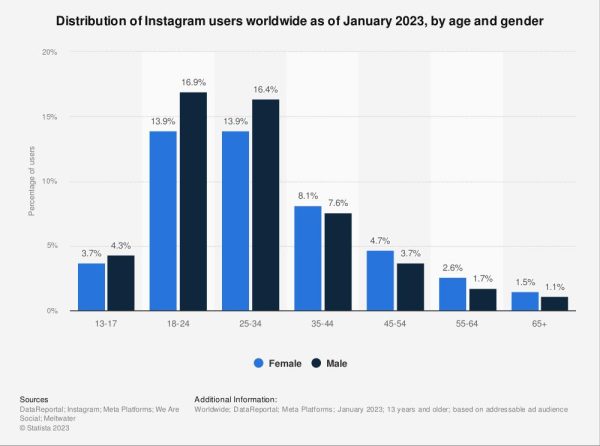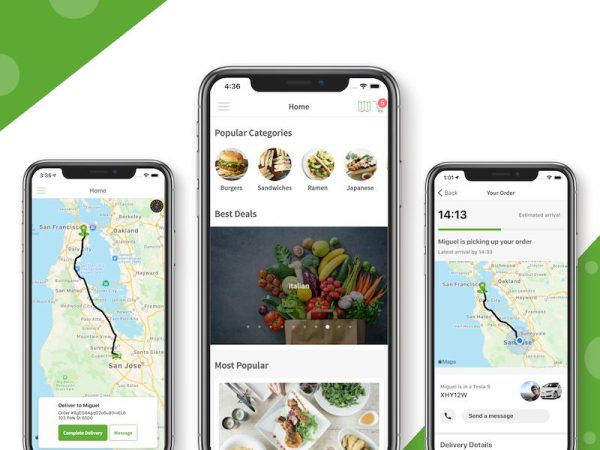
In recent years, React Native has gained immense popularity among developers due to its ability to build cross-platform mobile applications efficiently. With its flexibility and performance, React Native has become the go-to framework for many app developers. In this article, we will explore the top 10 mobile apps built on the React Native framework in 2023. From social media platforms to e-commerce applications, these apps showcase the versatility and power of React Native.
Are you looking to develop native apps for both Android and iOS platforms with a single codebase? If so, then React Native is the framework you need! Developed by the Facebook team, React Native has emerged as one of the most popular frameworks for building native-like apps that run smoothly on multiple platforms. Utilizing JavaScript as its foundation, this framework offers a seamless development experience for applications targeted at Android and iOS.
In a nutshell, React Native simplifies the process of app development by allowing developers to write code once and deploy it on both Android and iOS platforms. With its extensive library of pre-built components and a strong developer community, React Native empowers developers to create high-performing apps with a native look and feel. Whether you’re an experienced developer or just starting out, React Native provides a versatile and efficient solution for your cross-platform app development needs.
What Is React Native Framework?
React Native is an open-source framework developed by Facebook that allows developers to build mobile applications using JavaScript. It enables the creation of native-like user interfaces and offers a seamless user experience across different platforms, including iOS and Android. React Native combines the best features of React, a popular JavaScript library for building user interfaces, with native app development.
Advantages of Using React Native Framework for Mobile App Development
Before diving into the top mobile apps built on React Native, let’s explore the advantages that make this framework a preferred choice for developers:
- Cross-platform Compatibility
React Native allows developers to write code once and deploy it on multiple platforms. This cross-platform compatibility saves time and effort, as developers don’t need to build separate codebases for iOS and Android.
- Faster Development
With React Native, developers can create mobile apps more quickly compared to traditional native app development. The hot-reloading feature allows instant preview of changes, speeding up the development process.
- Native-like Performance
React Native utilizes native components, resulting in high-performance mobile applications. The framework enables smooth animations, responsive UI, and fast load times, providing a native-like experience to users.
- Cost-effective Solution
By using React Native, businesses can save on development costs. Since a single codebase can be used for multiple platforms, there is no need to hire separate teams for iOS and Android app development.
Now, let’s explore some of the top mobile apps that have been built using React Native in 2023.
Why Are The Largest Companies Using React Native?
In today’s digital era, mobile applications have become an essential part of every business. Whether it’s a startup or a multinational corporation, having a strong mobile presence is crucial for success. With the rapid advancement of technology, businesses are constantly seeking efficient ways to develop high-quality mobile applications that can run seamlessly on multiple platforms. This is where React Native, a powerful and popular framework, comes into play. In this article, we will explore why the largest companies are choosing React Native for their mobile app development needs.
React Native, developed by Facebook, is an open-source JavaScript framework for building native mobile applications. It allows developers to use the same codebase to create apps for both iOS and Android platforms, reducing development time and effort significantly. React Native combines the best features of native development with the flexibility and ease of use of React, a popular JavaScript library for building user interfaces.
Cost-effectiveness And Time Efficiency
One of the primary reasons why large companies opt for React Native is its cost-effectiveness and time efficiency. With React Native, developers can write code once and deploy it on multiple platforms, eliminating the need to build separate apps for iOS and Android from scratch. This not only saves development costs but also reduces time-to-market, allowing companies to launch their apps faster and gain a competitive edge.
Cross-platform Compatibility
React Native’s cross-platform compatibility is another compelling factor that attracts large companies. The framework leverages a single codebase, written in JavaScript, to create applications that are compatible with both iOS and Android platforms. This means that developers can reuse code, components, and libraries across platforms, ensuring consistent functionality and user experience regardless of the device.
Native-like User Experience
While React Native uses JavaScript, it offers a native-like user experience. It achieves this by utilizing native components, which are rendered using native APIs and UI components. This allows developers to create highly responsive and performant applications that closely resemble native apps. With React Native, companies can provide their users with a smooth and seamless mobile experience, enhancing customer satisfaction and engagement.
Strong Community Support
React Native benefits from a vibrant and supportive community of developers, which is another reason why large companies prefer it. The community actively contributes to the framework by developing new features, resolving issues, and providing valuable resources and documentation. This extensive community support ensures that companies have access to a vast pool of knowledge and assistance, making the development process smoother and more efficient.
Hot Reloading And Live Updates
React Native’s hot reloading and live updates feature enables developers to see real-time changes in their app as they code. This eliminates the need to recompile and reload the entire app every time a change is made. With hot reloading, developers can instantly view the effects of their code modifications, allowing for faster iteration and debugging. This feature is particularly advantageous for large companies with complex app development projects.
Code Reusability And Maintainability
React Native promotes code reusability, which is highly beneficial for large companies with multiple mobile apps or ongoing development projects. With a single codebase, developers can reuse components, modules, and libraries across different applications, saving time and effort. Additionally, maintaining a single codebase is easier and more cost-effective in the long run, as updates and bug fixes can be implemented across all platforms simultaneously.
Performance And Speed Optimization
React Native offers excellent performance and speed optimization capabilities. By utilizing native rendering, the framework ensures smooth animations and transitions, resulting in a superior user experience. React Native also allows developers to optimize app performance by incorporating native code for CPU-intensive operations, further enhancing app speed and responsiveness. This performance boost is crucial for large companies that aim to deliver high-quality, high-performing mobile applications.
Scalability And Flexibility
Large companies often require scalable and flexible solutions to accommodate their growing user base and evolving business needs. React Native provides the flexibility to scale applications seamlessly, both in terms of features and performance. The modular architecture of React Native allows developers to add or remove components as required, ensuring that the app can adapt to changing requirements without major code rewrites.
Integration With Existing Apps
Integrating new features or migrating to a different platform can be challenging for large companies with established apps. React Native simplifies the process by enabling smooth integration with existing native apps. This means that companies can gradually incorporate React Native into their app development workflow without the need for a complete overhaul. React Native’s compatibility with native modules and existing codebases makes it an ideal choice for seamless integration.
Third-Party Plugin Support
React Native offers extensive support for third-party plugins, which is highly advantageous for large companies that require additional functionalities in their apps. There is a wide range of community-developed and maintained plugins available, covering various domains such as analytics, social media integration, payment gateways, and more. This plugin support allows companies to enhance their app’s capabilities without investing additional time and resources in custom development.
Enhanced Developer Productivity
With its intuitive and declarative programming model, React Native significantly improves developer productivity. The framework’s reusable components and pre-built UI elements enable developers to build apps quickly and efficiently. Moreover, React Native’s “learn once, write anywhere” approach, based on JavaScript, makes it accessible to a broader pool of developers. Large companies can leverage this increased productivity to streamline their development processes and deliver apps faster.
Security and Stability
Large companies prioritize security and stability when choosing a mobile app development framework. React Native ensures the security of applications by adopting industry best practices and leveraging the underlying security features of the native platforms. Additionally, React Native’s vast community ensures that any security vulnerabilities are identified and resolved promptly. The framework’s stability and reliability make it a trusted choice for companies that value the integrity and safety of their mobile applications.
Continuous Improvement and Updates
React Native is a constantly evolving framework that receives regular updates and improvements from Facebook and the community. These updates introduce new features, enhancements, and bug fixes, ensuring that React Native stays at the forefront of mobile app development. Large companies appreciate this commitment to continuous improvement, as it guarantees that their apps can leverage the latest advancements in technology, remain competitive, and meet evolving user expectations.
Distribution of Instagram users worldwide as of January 2023, by age group

Instagram, the popular photo-sharing social media platform, adopted React Native to enhance its mobile app’s performance and deliver a consistent experience across different devices. React Native allowed Instagram to develop new features faster and improve the overall user interface, resulting in a smoother browsing and photo-sharing experience for millions of users worldwide.
Are you ready to explore the vibrant world of Instagram? With approximately one billion monthly active users, Instagram has cemented its position as one of the most popular social media platforms. But what makes it so irresistible? How has it captured the attention and fascination of people worldwide? In this article, we will delve into the captivating realm of Instagram, uncovering its secrets and shedding light on why it continues to dominate the social media landscape.
2. Facebook

Facebook, the largest social media platform, also leverages the power of React Native to provide a seamless user experience on mobile devices. React Native enables Facebook to rapidly prototype and deploy new features, ensuring that users can access their news feed, post updates, and interact with friends and family effortlessly.
- Airbnb
Airbnb, the leading online marketplace for accommodations, utilized React Native to streamline its mobile app development process. React Native empowered Airbnb to deliver a unified experience to users, regardless of their device. The framework allowed Airbnb to optimize performance and reduce development time, resulting in a user-friendly and visually appealing app.
4. Tesla

Tesla, the renowned electric car manufacturer, chose React Native to develop its mobile app. By leveraging React Native, Tesla created a feature-rich application that allows users to control various aspects of their Tesla vehicles remotely. React Native’s cross-platform compatibility enabled Tesla to reach a wider audience and offer a consistent experience across different devices.
5. Uber Eats

Uber Eats, the popular food delivery platform, embraced React Native to provide a seamless ordering experience for its users. React Native allowed Uber Eats to build a robust and efficient app, enabling customers to browse restaurants, place orders, and track deliveries effortlessly. The framework’s performance benefits played a crucial role in delivering a reliable and fast food delivery service.
6. Discord
Discord, the leading communication platform for gamers, opted for React Native to develop its mobile app. With React Native, Discord was able to provide an immersive chat experience and integrate real-time voice and video communication seamlessly. The framework’s flexibility and performance were instrumental in creating a user-friendly app for gamers worldwide.
7. Wix
Wix, the popular website builder, utilized React Native to enhance its mobile app development capabilities. React Native enabled Wix to create a feature-rich and visually appealing app that allows users to build and manage their websites on the go. The framework’s ability to deliver a native-like experience contributed to Wix’s success in the mobile app market.
8. SoundCloud
SoundCloud, the largest online audio distribution platform, adopted React Native to revamp its mobile app and improve performance. React Native allowed SoundCloud to create a seamless and intuitive interface for users to discover, stream, and share music effortlessly. The framework’s performance optimization features played a crucial role in delivering an exceptional audio streaming experience.
9. Walmart
Walmart is indeed a reputable retail giant corporation that operates discount department stores and warehouse stores across the globe. It is a well-known brand and has a significant presence in the retail industry.
React Native, a popular framework for building mobile applications is used by many companies, including Walmart, to develop their mobile apps. By leveraging React Native, Walmart can create mobile applications that work on both iOS and Android platforms, reducing development time and effort.
With a React Native-based application, Walmart can provide its customers with a seamless shopping experience on their mobile devices. Users can browse products, search for items, add them to their cart, and complete purchases, all within the Walmart app. React Native allows for efficient development and ensures the app’s performance and user interface are consistent across different platforms.
Conclusion
React Native has emerged as a powerful framework for developing mobile applications, and the top 10 apps mentioned above demonstrate its capabilities. From social media giants like Instagram and Facebook to industry disruptors like Tesla and Airbnb, React Native has enabled these companies to build robust and feature-rich mobile apps that resonate with their users.
With its cross-platform compatibility, fast development cycle, and native-like performance, React Native continues to be a popular choice among developers. As the framework evolves, we can expect even more innovative and exciting mobile apps to be built on React Native in the future.


